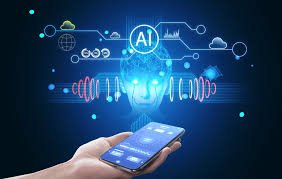The world of application development is evolving at a rapid pace. In the past, success in app creation relied primarily on skilled coding and clean architecture. Today, it’s about much more it’s about intelligence. Businesses aren’t just looking for functional applications; they want smart applications that learn, adapt, and make decisions.
This is where AI-enhanced application development solutions are redefining what’s possible. By integrating Machine Learning (ML) into the development lifecycle, businesses can create apps that deliver personalized experiences, optimize performance in real-time, and even anticipate user needs before they arise.
In 2025 and beyond, the fusion of AI and application development is no longer optional — it’s the competitive edge.
Why AI Is Transforming Application Development
1. Data-Driven Decision Making
AI algorithms enable applications to collect, process, and analyze vast amounts of data, turning raw information into actionable insights.
2. Personalization at Scale
From recommending products to customizing content layouts, AI allows apps to serve unique user experiences without manual intervention.
3. Automation Across the Lifecycle
Machine Learning models can help automate tasks like bug detection, feature optimization, and even parts of the coding process.
4. Predictive Capabilities
AI-enhanced applications can forecast trends, detect potential problems, and adapt accordingly.
Core AI Technologies Powering Application Development Solutions
When it comes to AI-enhanced development, a few key technologies stand out:
-
Machine Learning (ML): Enables applications to learn from data and improve performance over time.
-
Natural Language Processing (NLP): Allows apps to understand, interpret, and respond to human language.
-
Computer Vision: Powers image recognition, facial authentication, and real-time object detection.
-
Reinforcement Learning: Improves decision-making by learning from interactions.
-
AI Ops: Uses AI to automate and optimize IT operations, boosting app performance and reliability.
How AI-Enhanced Development Works
Step 1: Problem Definition and Data Collection
The development process begins with identifying the use case and gathering relevant data — everything from customer behavior logs to industry trends.
Step 2: Model Selection and Training
ML models are chosen and trained on datasets to ensure they can deliver the required predictions or automation.
Step 3: Application Integration
AI models are embedded into the application through APIs or direct integration within the app’s backend.
Step 4: Testing and Optimization
Continuous testing ensures that AI outputs are accurate and aligned with user expectations.
Step 5: Deployment and Continuous Learning
Once deployed, the AI continues to learn from user interactions, making the app smarter over time.
Real-World Use Cases of AI in Application Development Solutions
1. Smart Retail Apps
AI enables personalized product recommendations, dynamic pricing models, and intelligent inventory management.
2. Healthcare Applications
From symptom-checking chatbots to predictive patient care, AI-powered apps help healthcare providers improve accuracy and efficiency.
3. Finance and Banking
AI detects fraudulent transactions, automates credit scoring, and improves customer support through intelligent virtual assistants.
4. Logistics and Supply Chain
Predictive analytics optimizes delivery routes, reduces fuel consumption, and forecasts demand accurately.
5. Education Technology
AI-driven apps create adaptive learning paths for students, adjusting content based on performance.
Benefits of AI-Enhanced Application Development Solutions
|
Benefit |
Business Impact |
|
Higher User Engagement |
Personalization keeps users coming back. |
|
Faster Time-to-Market |
AI automates repetitive coding and testing tasks. |
|
Improved Decision Making |
Real-time insights allow for agile adjustments. |
|
Cost Savings |
Efficient processes and predictive maintenance reduce expenses. |
|
Scalable Intelligence |
AI models adapt as user bases and datasets grow. |
Challenges and How to Overcome Them
Data Privacy Concerns
AI models require data, and improper handling can lead to compliance risks. Solution: Implement strong encryption and follow GDPR/CCPA guidelines.
Model Bias
If training data is biased, AI outputs will be skewed. Solution: Use diverse datasets and continuously audit models.
Integration Complexity
Not all AI models fit seamlessly into existing infrastructures. Solution: Partner with providers offering custom integration support.
Best Practices for Building AI-Enhanced Apps
-
Start with a Clear ROI Goal – Identify how AI will drive measurable business outcomes.
-
Use the Right Data Sources – Quality and diversity of data determine AI success.
-
Build with Scalability in Mind – Ensure your AI models can handle increased data loads over time.
-
Integrate with Existing Systems – Avoid building in isolation; AI should enhance current workflows.
-
Plan for Ongoing Optimization – AI is never “set and forget” — it requires continuous updates.
The Future of AI in Application Development Solutions
By 2030, most applications will be “AI-native” — designed from the ground up with embedded intelligence. Emerging trends include:
-
Self-Healing Apps that detect and fix bugs automatically.
-
Voice-First Development, where developers use conversational AI to code applications.
-
Hyper-Personalization Engines capable of tailoring every element of the UI to the individual.
Organizations adopting AI-enhanced application development today will be well-positioned to lead in this smarter, more automated future.
Conclusion
AI is no longer an optional upgrade in application development it’s the foundation for building smarter, faster, and more intuitive software. Application development solutions powered by Machine Learning allow businesses to move beyond simple functionality into the realm of predictive, adaptive, and personalized experiences.
By integrating AI strategically and following best practices, organizations can future-proof their apps, delight users, and gain a competitive edge in an increasingly intelligent digital landscape.
FAQs: AI-Enhanced Application Development
1. What makes AI-enhanced apps different from traditional apps?
AI-enhanced apps use algorithms to learn from user interactions and data, enabling them to adapt and improve over time.
2. Can AI be added to an existing application?
Yes, AI models can be integrated into existing applications through APIs or direct backend integration.
3. Are AI-enhanced apps more expensive to develop?
They may require a higher initial investment, but automation, efficiency, and personalization typically deliver higher ROI.
4. How do I ensure my AI-powered app is ethical?
Follow responsible AI guidelines, avoid biased datasets, and ensure transparency in decision-making processes.
5. Which industries benefit most from AI in application development solutions?
Retail, healthcare, finance, logistics, and education are among the top industries seeing transformative results.





